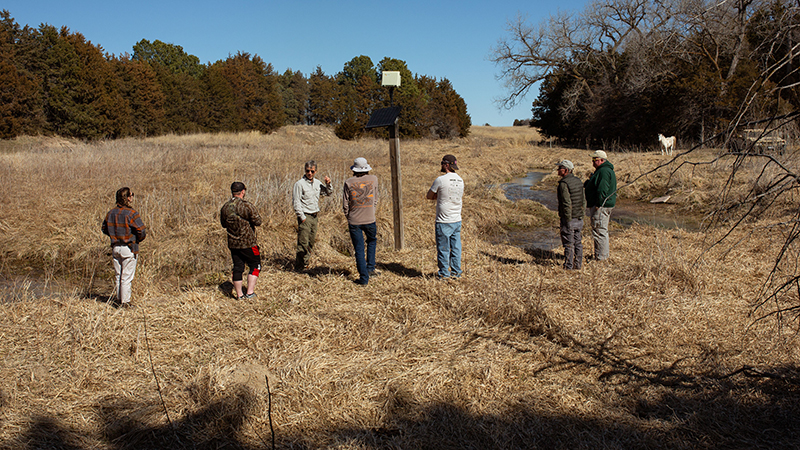Posted: 1/28/2025
Class offers Nebraska as spring break destination
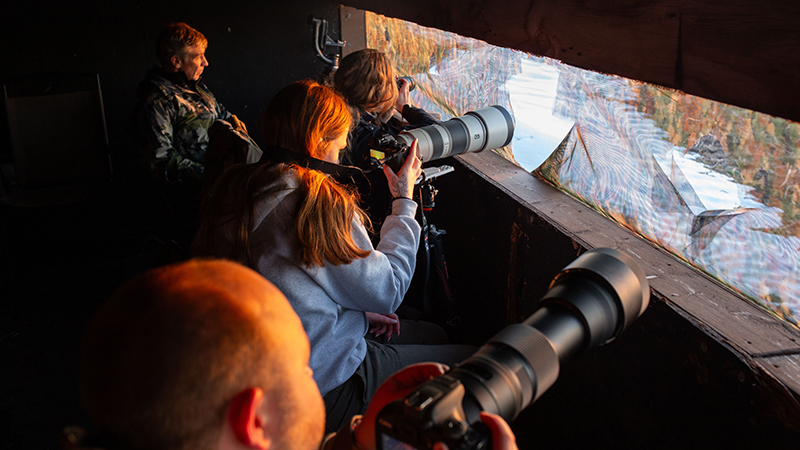
By Ronica Stromberg
It's a class that for only $400 provides University of Nebraska–Lincoln students with transportation, meals and lodging at the United States’ most popular spring break destination.
For birds, that is.
Every spring, about 80 percent of the world’s sandhill cranes converge in central Nebraska in late February. There, about a million sandhill cranes act out the same scene their ancestors have for ages, meeting, mating and gorging on beak-smacking foods like leftover crops, insects, snails, small fish, mice and frogs.
From March 16-20, 2025 this year, the three instructors of the NRES 493 class—enrolling now!—will take up to eight students to these grounds and then on to the Sandhills. On the sandy shores and isles of the Platte River, students can expect to see not the typical beach scenes of bikinis and Speedos but of birds—dancing and having the time of their life during migration. Sandhill cranes test all their moves on spindly legs and then make off to Canada before taxes come due.
After watching this scene from Crane Trust blinds and staying in the organization's dorms, the students and instructors will head north into the Sandhills to see other bird species dancing on breeding grounds called leks. Male prairie chickens typically pull out all the stops in this dance competition to attract mates. They stomp their short legs, jump in the air, spin in circles, and make the feathers on their heads stand up like horns. If this chicken dance fails to catch a hen’s eyes, her ears offer another chance. The males inflate the orange air sacs on their necks and call out in booms that can be heard up to a mile away.
The morning after, students will watch the courtship dance of sharp-tailed grouse on their leks. These birds’ choreography may include clawing, pecking and chest bumps between competitors, like a mini WWE Smackdown.
Mike Forsberg, a conservation photographer and School of Natural Resources professor, co-leads this class, now in its fourth year. Larkin Powell, the director of the School of Natural Resources, and Carlee Moates, a producer for the Platte Basin Timelapse, will coteach with him this year. The class was dubbed 'Prairie Cranes and Sandhill Chickens' as a play on the birds' real names. Sandhill cranes are found in the prairie, and prairie chickens are found in the Sandhills. Students learn this and much more about the birds and the land in the one-credit course.
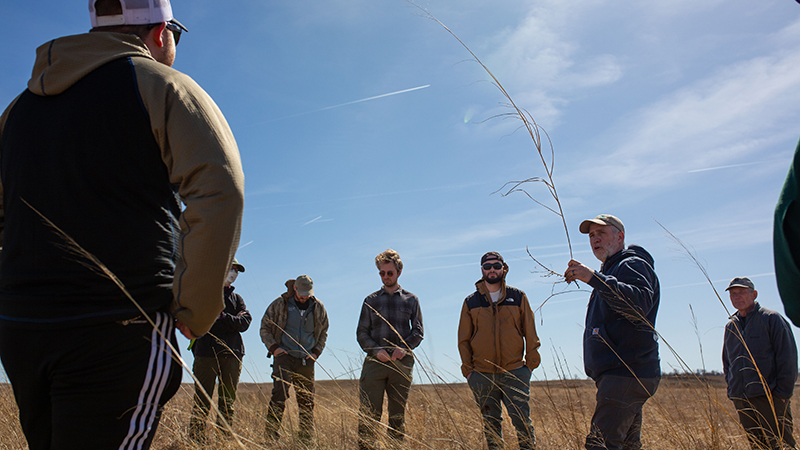
Between the viewing of the cranes and the chickens, the class spends a half-day with Chris Helzer, a Nebraska alumnus who is the director of science for Nebraska at The Nature Conservancy. Helzer takes students for a walk in the prairie, showing them what he and The Nature Conservancy do to conserve grasslands and prairies. He presents at the organization’s headquarters about its role and mission and tells how he went from being a School of Natural Resources student to his work as an ecologist today.
Once in the Sandhills, the students and instructors stay at the Switzer Ranch north of Burwell. Sarah Sortum, a co-owner of the ranch and Calamus Outfitters, gives the class an ecotour showing how today’s ranchers strive for harmony in making a living while conserving grasslands and wildlife.
Moates cotaught the Prairie Cranes and Sandhill Chickens class for the first time last year and said she found it interesting how many students in the class had grown up in Nebraska but never seen the sandhill crane migration and how others had come from an agriculture state but never seen a cattle operation.
Forsberg noted the university offers many great study abroad trips but this is a great trip students can take close to home.
"I think we undersell and undervalue what we have here in our backyard," he said. "It's not the mountains or the ocean or the Grand Canyon or whatever, but it really is remarkable."
He said students in the class often tell him that they had no idea that this wildlife experience existed in Nebraska or that it would be so powerful to them. They also express gratitude for the chance to meet and learn from people at the Crane Trust, The Nature Conservancy and Switzer Ranch.
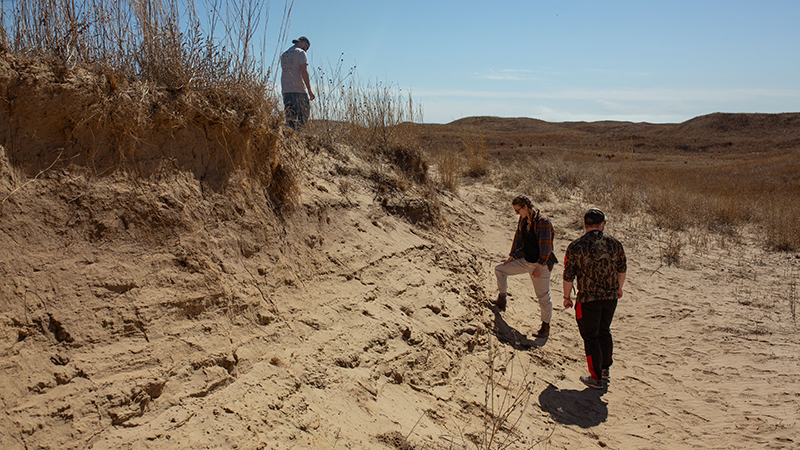
"In all of those cases, the students get to see and meet people that sometimes are in the careers that they want to have someday," Forsberg said. "Or, maybe by meeting these people, they get to understand what careers are out there, that are available for them, that might not have been completely clear or evident before."
Because this is a local trip, the networking can sometimes lead to internships or prove a valuable contact for later job opportunities in the state.
Students in the class typically come from the fields of natural resources, agronomy, biological sciences, education or journalism, but the class is not limited to any major, year in school or background.
"I'd love to see as many seed corn caps as cowboy hats as tree hugger hats," Forsberg said.
Students complete one project for the class, which they are graded on. These projects are seldom a paper or presentation. Students choose what their project will be, turning it in within a month after class end. Many students choose a photography project or set video to music, but others have written poetry or songs or created art, like a diorama or an embroidered picture. The sky is not the limit—students study the night sky, and one did a project on the constellations.
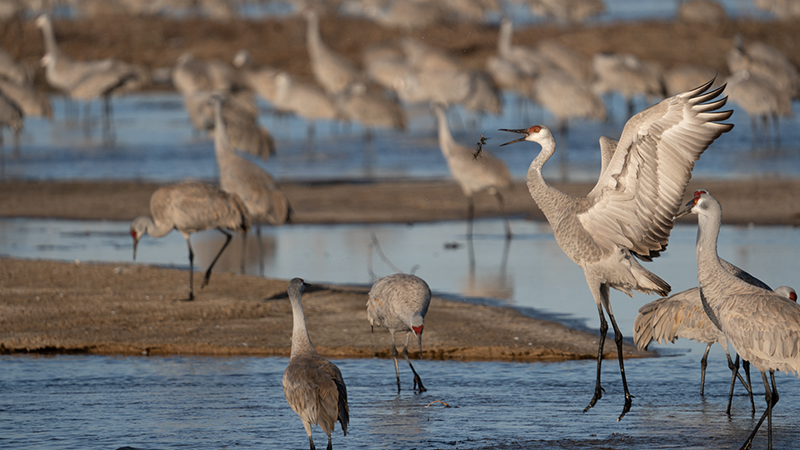
Marissa Lindemann, a broadcast journalism student who took the class last year, produced a photo gallery and said she appreciated the flexibility of the final project.
"I love when professors give you the option to flex your creative wings, and this class definitely gave me the opportunity to do that," she said.
She recommended the class to other students and said that if she could take all of her classes as field experiences like this, she would.
"The idea of knocking out a class in one week is also really appealing, so you don't have to multitask and juggle as many classes at once during the semester," she said.
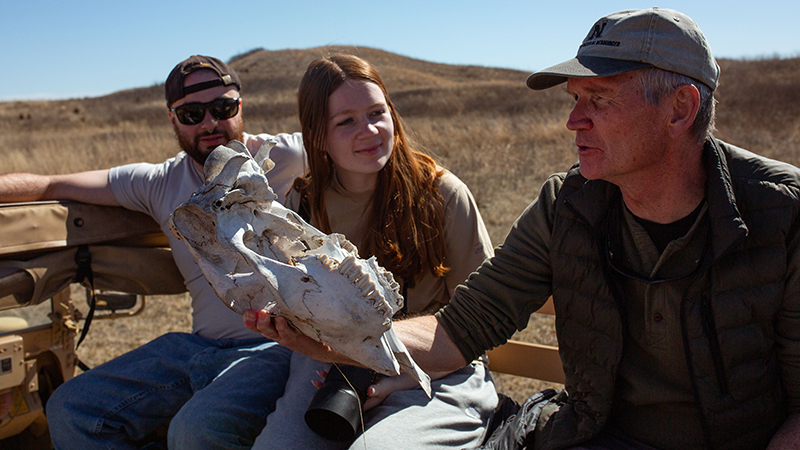
Forsberg said the instructors have increased the flexibility of the class over time, resisting the urge to deliver too much information and, instead, building in free time for students to soak in this environment. Students learn about bird species, grasslands, rural lifestyles and conservation through observation, experiences and discovery. Forsberg said it doesn’t matter to him whether students do a science project or an art project at the class end because, in his mind, science and art are the same thing.
"It's just different ways that you come at it," he said. "They both start with wonder, and wonder is the thing that I really want students to go home with."
Students interested in taking the class need to email Forsberg at mforsberg2@unl.edu and Moates at ckoehler2@unl.edu by February 14, 2025. They should give their name, major, year, background and tell why they are interested in the class or how they expect it to benefit them.
